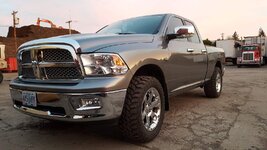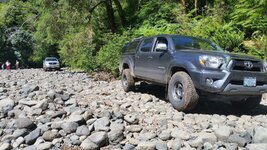Gold Supporter
- Messages
- 6,596
- Reactions
- 10,143
Dude, Righteous!Here's mine, wife hates it and calls it a relic. Served me well for 19 years so far.
View attachment 321342
Picture is not the best but shows true dual exhaust on a straight 6, cast iron headers.
View attachment 321343
I love those early Chevy II's!...and you don't see many wagons.
I like how you kept the straight six engine, too.
Those cast iron headers....Fenton's?
...and don't worry about the look....just tell the wife it gives it that rustic old world charm...just like her "collectibles".
Dean
P.S. - Re: "marine cylinder head". I've heard that when GM went to the integral intake manifold design, they changed the porting of that head to help make it a little more efficient. The new port design was based on the marine version already in existence....now all you need is the marine cam to go with that head. -b
Last Edited:
















